
Halls Creek
Project
The Halls Creek Project is located in the Kimberley region of Western Australia, a region with a rich mining history.
The Project comprises an extensive tenement portfolio covering some 250 km2 with the main deposits (Sandiego and Onedin) hosted within existing Mining Leases. The COB team drew upon a substantial amount of historical exploration, development work, previous economic evaluations and our own expertise to develop a Scoping Study for the Halls Creek Project.
Key outcomes of the Halls Creek Scoping Study:
- 10.5 year project life
- Pre-tax NPV 8% (real) of A$172m
- Pre-tax Internal Rate of Return of 28%
- Start-up Capex of A$73m
Location
The Halls Creek Project is located 15km southwest of the Halls Creek township, directly adjacent to the Great Northern Highway which connects the Project to Kununurra and Wyndham Port, respectively some 300km and 320 km north. Wyndham Port is the only deep-water port between Broome and Darwin servicing exports including crude oil, live cattle, raw mined products, scrap metal and maize from across Northern Australia and produce from the Ord River irrigation area.
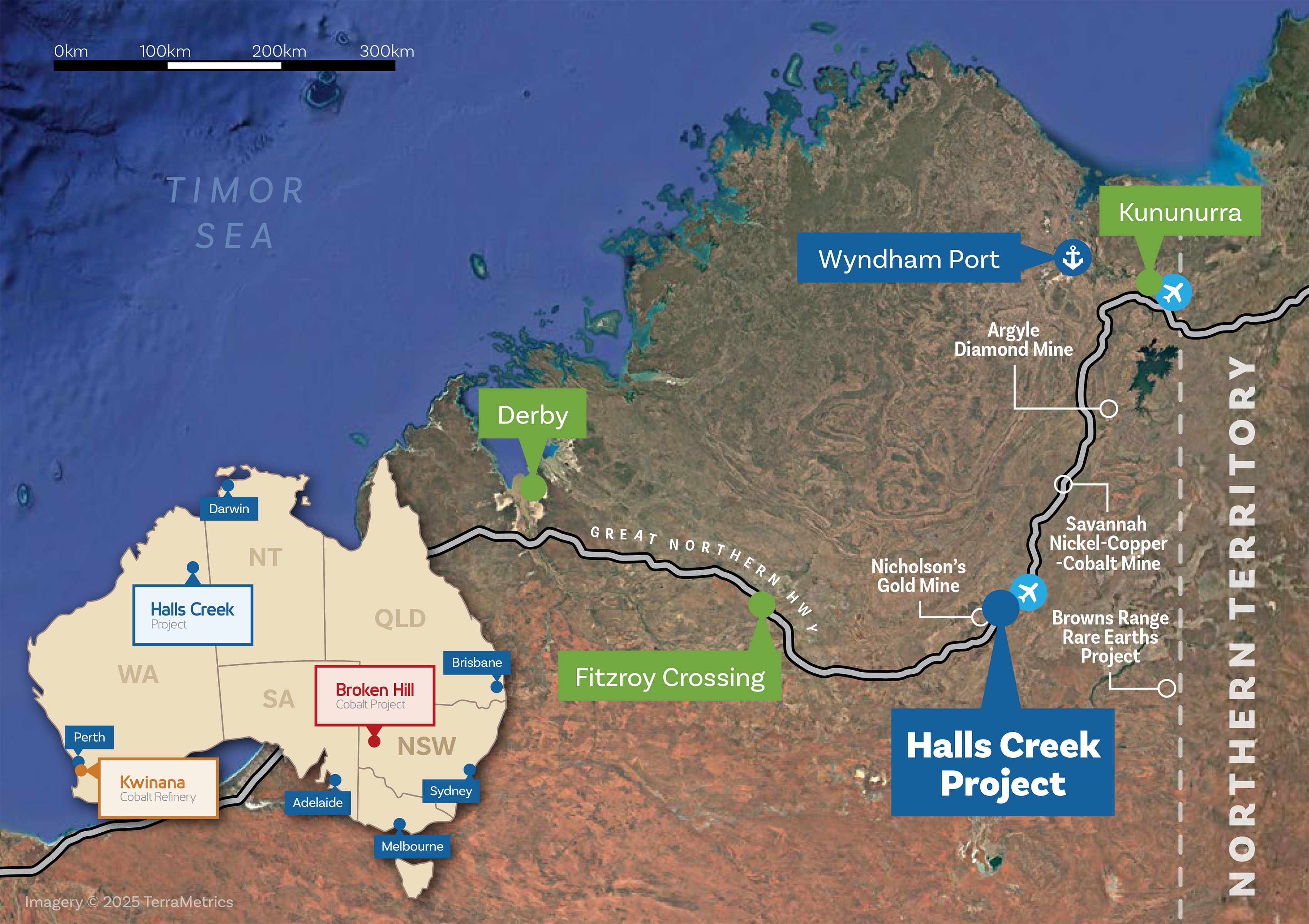
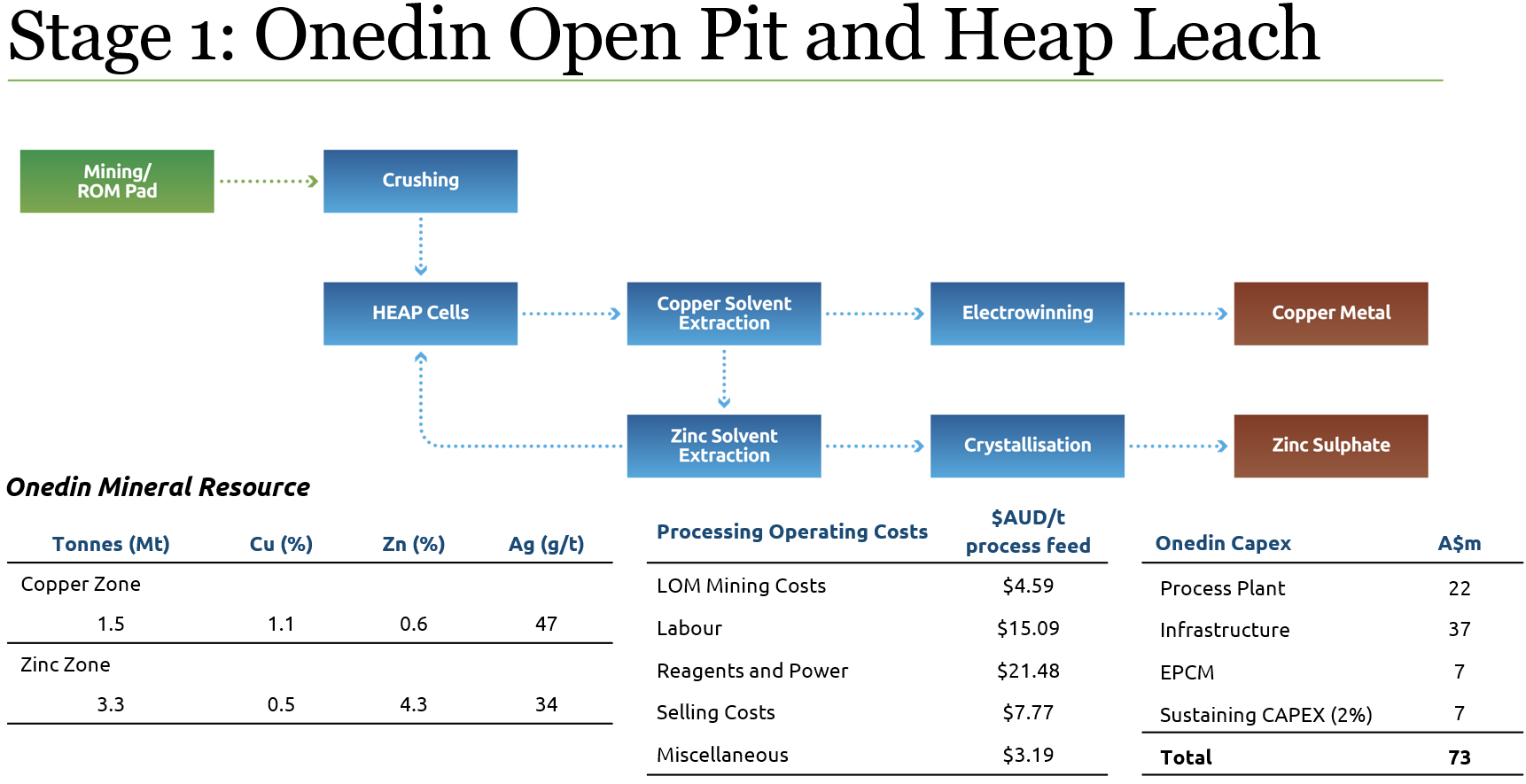
Project Staging
The Scoping Study reflects a staged mining and processing operation to minimise start-up capital requirements and prioritise early cash flow:
- Stage 1 - Onedin Open Pit and Heap Leach: A two-stage open pit operation at Onedin, supplying oxide and transition feed to a heap leach facility located at Onedin for production of copper metal and zinc sulphate monohydrate via solvent extraction and electrowinning / crystallisation.
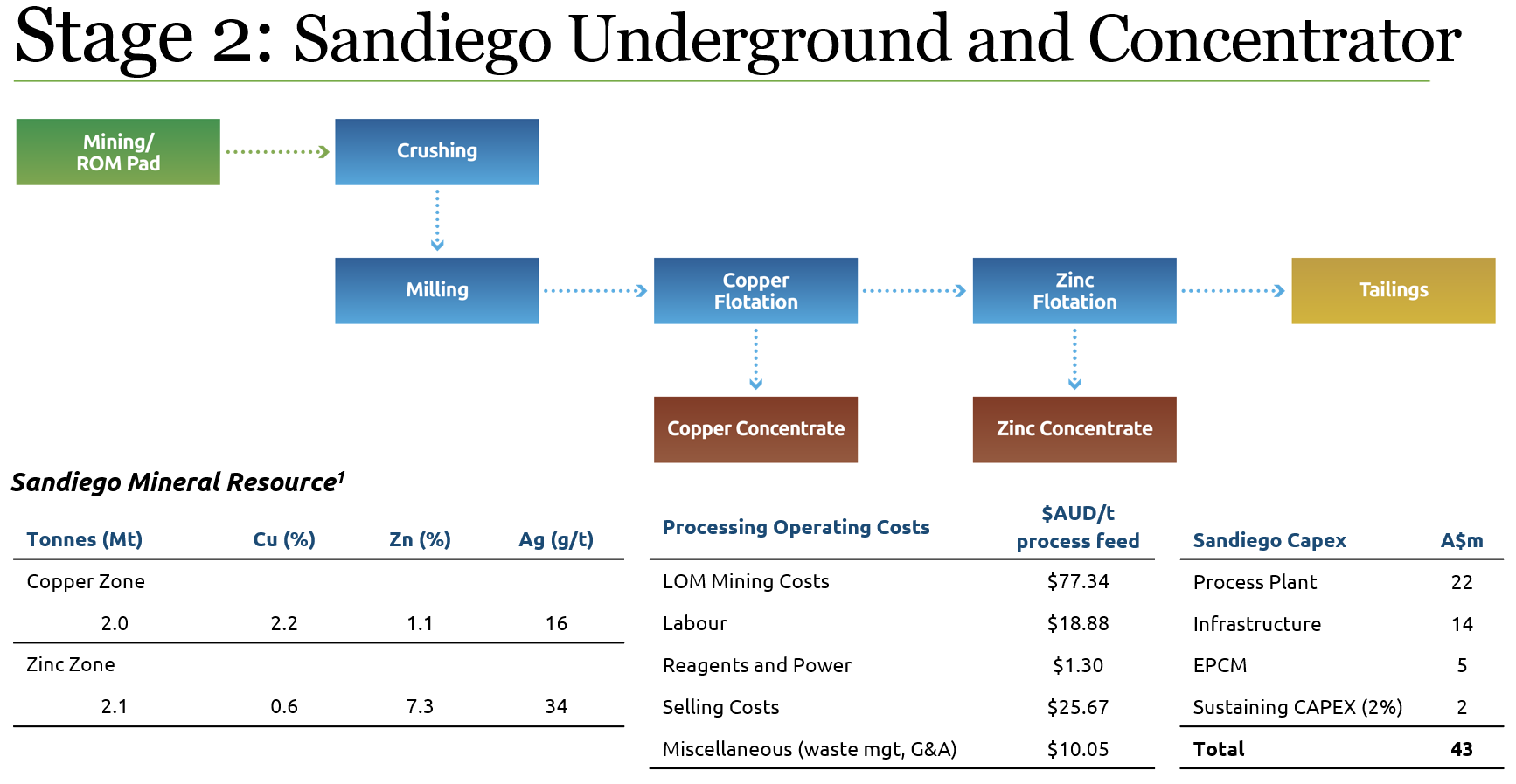
- Stage 2 - Sandiego Underground and Concentrator: An underground mining operation at Sandiego, delivering transition and primary feed to a concentrator to produce separate copper and zinc concentrates.
Halls Creek Project tenement schedule
The Project boasts an extensive tenement portfolio covering some 250km2 with the main deposits (Sandiego and Onedin) are hosted within existing Mining Leases (M 80/276 and M 80/277 respectively).
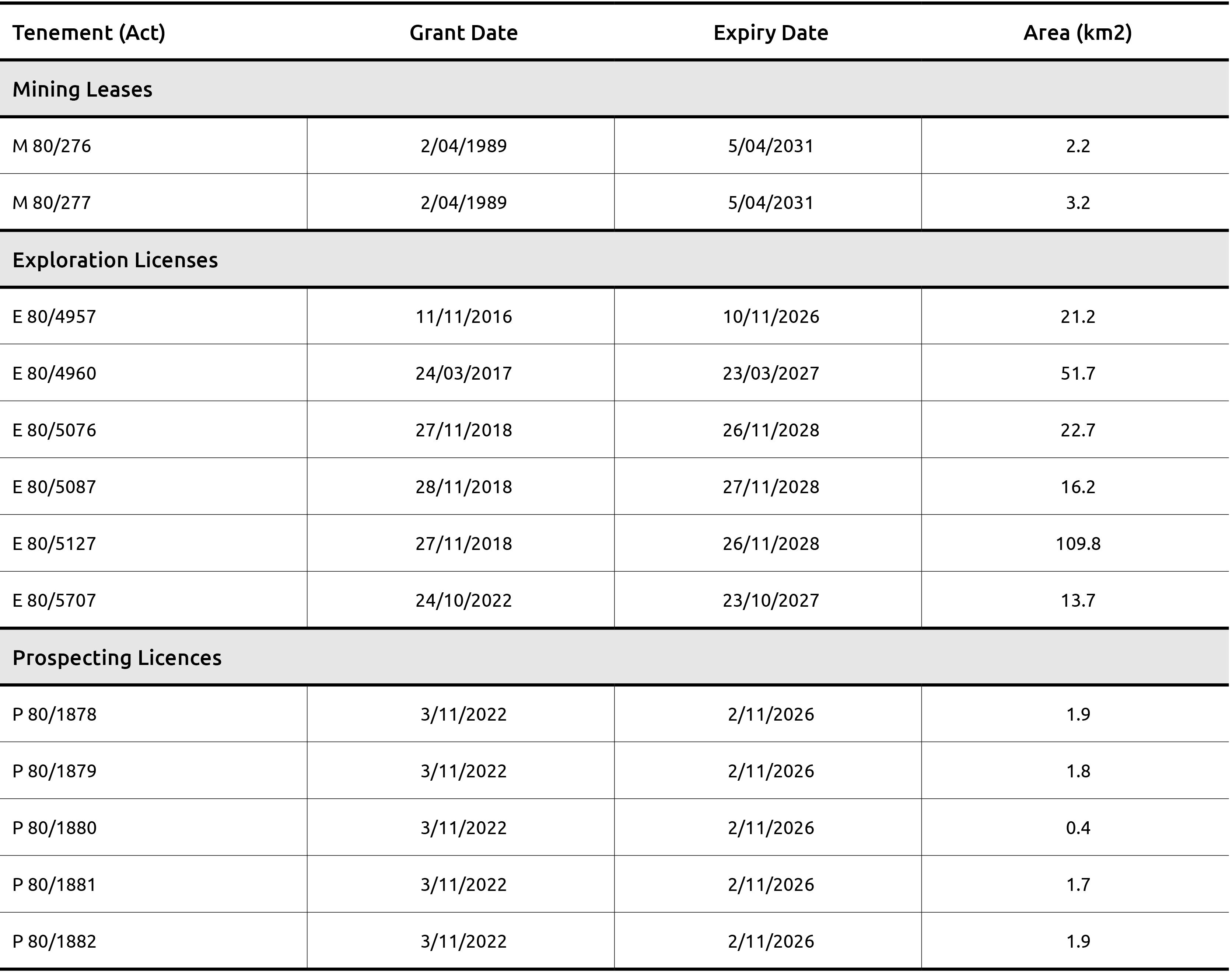
Sandiego and Onedin deposit locations within the broader tenement holding.
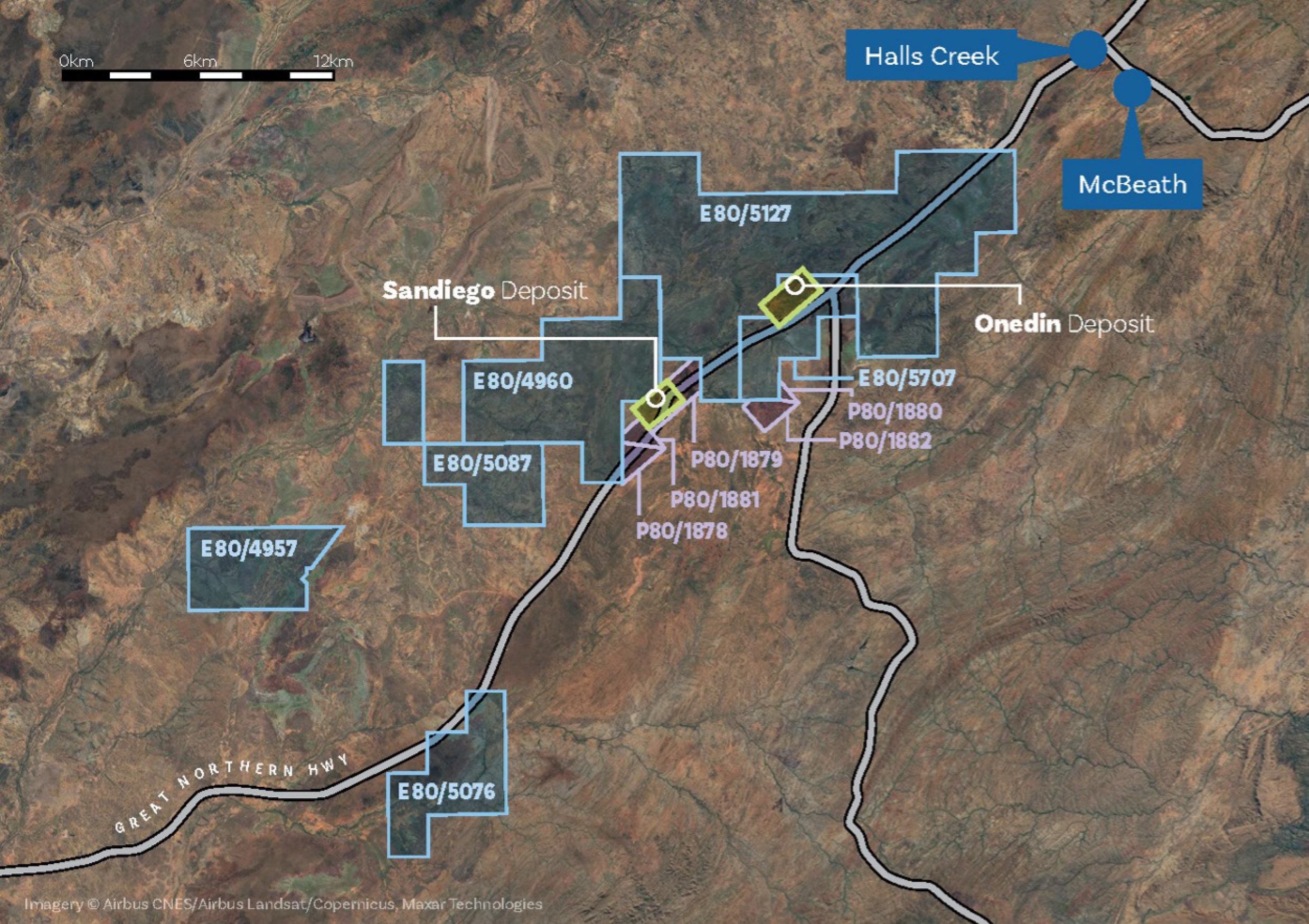
Mineral Resource Estimates
The Halls Creek Project is inclusive of two existing Mineral Resources including:
- Sandiego – 4.1Mt at 1.4% Cu, 0.4% Pb, 4.2% Zn and 25g/t Ag for 56kt contained copper, 18kt, lead, 175kt zinc and 3.3Moz silver.
- Onedin - 4.8Mt at 0.7% Cu, 1.1% Pb, 3.1% Zn and 38g/t Ag for 33kt contained copper, 51kt lead, 151kt zinc and 5.9Moz silver.
Mineral Resource estimate for the Sandiego deposit detailed by classification. Note minor rounding errors may have occurred in compilation of this table.
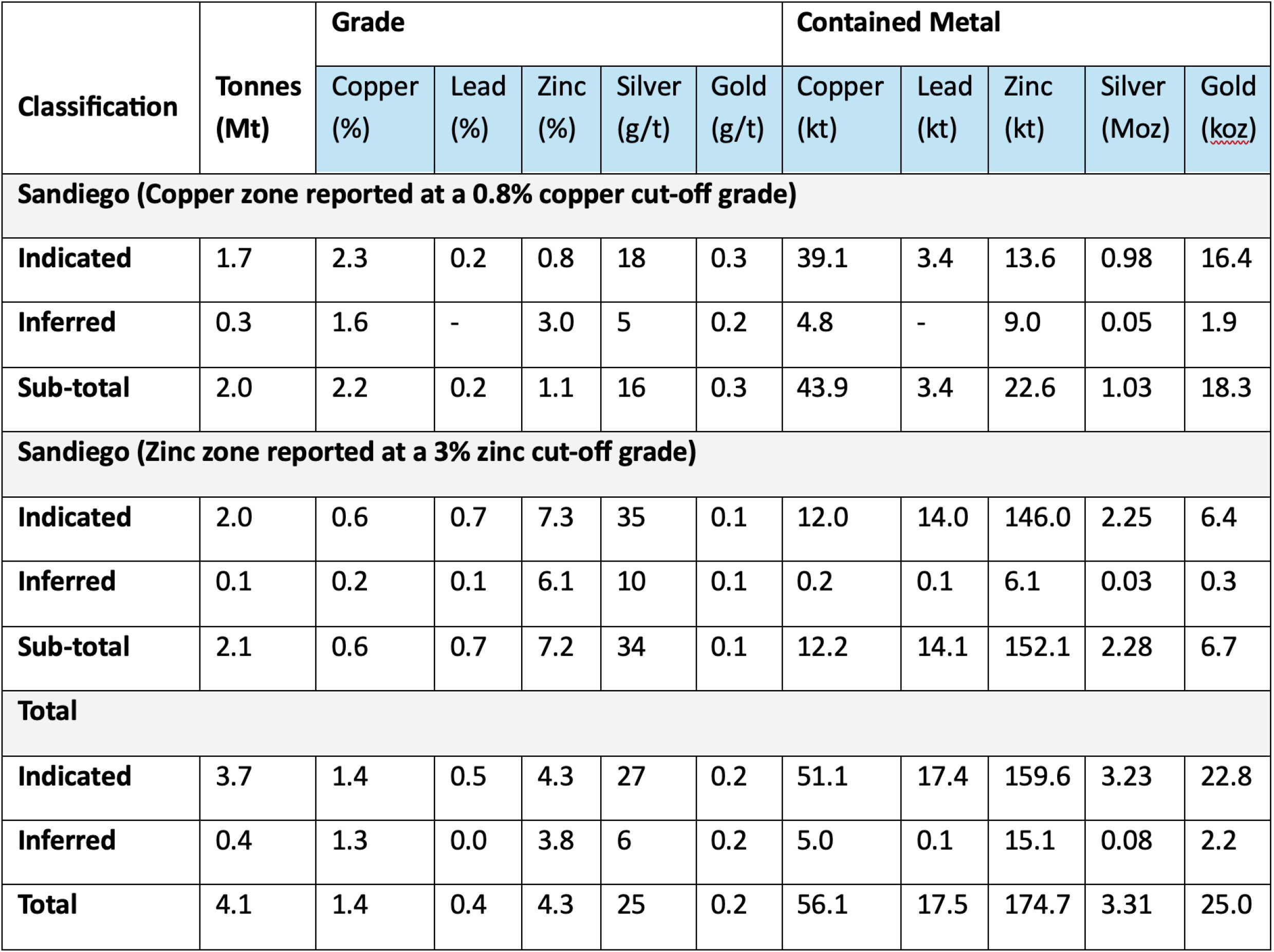
Mineral Resource estimate for the Onedin deposit detailed by classification. Note minor rounding errors may have occurred in compilation of this table.

The information related to the Mineral Resource estimate is extracted from the report titled ‘COB Diversified – Major Copper Project Earn in’ issued on 18 February 2025. The Company confirms that it is not aware of any new information or data that materially affects the information included in the original market announcement and, in the case of Mineral Resources, all material assumptions and technical parameters underpinning the estimates in the relevant market announcement continue to apply and have not materially changed. The Company confirms that the form and context in which the Competent Person’s findings are presented have not been materially modified from the original market announcement.
Geology
Massive sulphide deposits at Sandiego and Onedin are hosted by the Koongie Park Formation comprising mafic and felsic volcanics, associated sediments including sandstone, mudstone, carbonate, chert and ironstone, and is intruded by rhyolitic to rhyodacitic sills, dolerite bodies and basalt dykes. Massive sulphide mineralisation is strata-bound, with disseminated sulphides overlaying the massive sulphides. Both deposits are interpreted to occur within the limbs of intensely folded, higher order, double-plunging anticlinal structures.
The massive sulphide deposits of Koongie Park are classified as Volcanogenic Massive Sulphide (‘VMS’) deposits. The mineralogy of the primary mineralisation at Sandiego is pyrite-sphalerite-pyrrhotite-chalcopyrite +/- galena, which is largely hosted in the magnetite-rich exhalative suite of rocks where it occurs as a massive conformable wedge-shaped lens 200m in length with a maximum thickness of 75m. At Onedin, sphalerite is the main sulphide in the primary mineralisation with subordinate pyrrhotite-pyrite-chalcopyrite-galena. Onedin comprises numerous stacked lenses of mineralisation with a folded and faulted geometry over a vertical extent of 400m.
Both deposits have a deep weathering profile (up to 250m below the surface), resulting in three weathering domains: an oxidised zone at the surface, a primary zone at depth, and a transition zone in between.